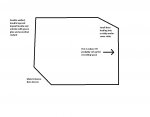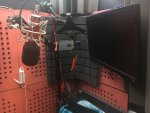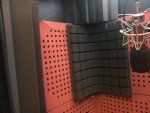Dalton Lynne
New member
Hello all - I'm in the process of building a vocal booth that is double-walled, has double layers of sheet rock on each side and the ceiling with green glue in between (and acoustical sealant), and with two angled doorways across from each other (one doorway having two doors). It's roughly 6.5 x 6.5 x 6.5 and was constructed for the purpose of audiobook recording/voiceover work. I've been trying to figure out how to do proper acoustical treatment once it's ready for me to "move in." I used this video to come up with a plan but am not sure if what I'll do is sufficient or not. Here is the video:
YouTube
So, based on that information (based on voice usage) I'm planning to use two 23" x 23" diffusers (one in front of me, one behind), and sound absorption panels (one on each wall beside me, and one or two on the ceiling.
Does that sound adequate, or am I way off base?
YouTube
So, based on that information (based on voice usage) I'm planning to use two 23" x 23" diffusers (one in front of me, one behind), and sound absorption panels (one on each wall beside me, and one or two on the ceiling.
Does that sound adequate, or am I way off base?





 I mean, I know what bass traps look like, and acoustical foam, but I'd have never guessed those holey panels were like a diffuser. derp
I mean, I know what bass traps look like, and acoustical foam, but I'd have never guessed those holey panels were like a diffuser. derp